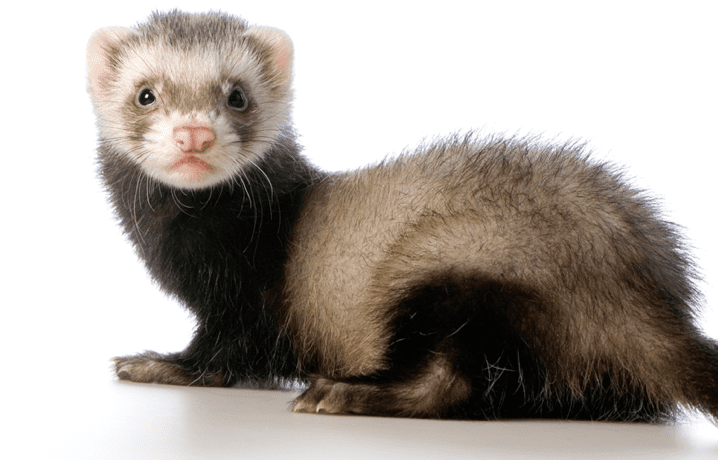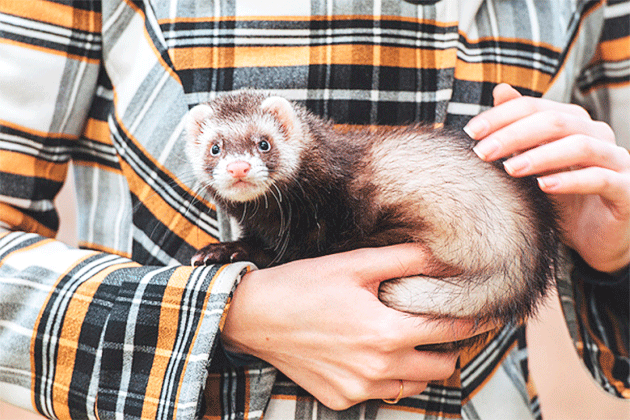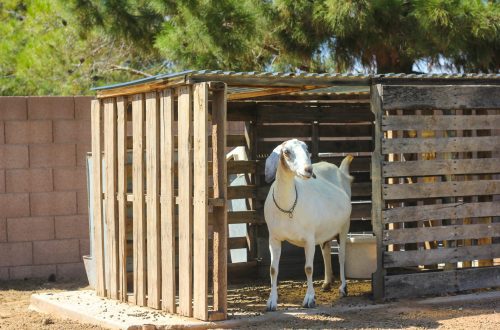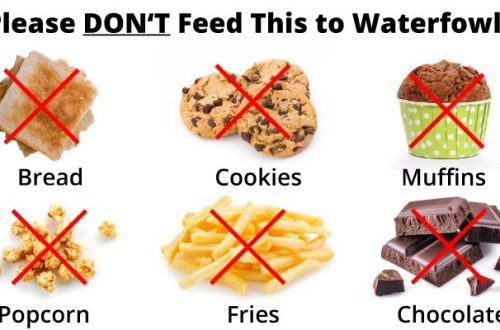
Keeping domestic ferrets

The ferret is a cheerful, active and inquisitive pet. How did he appear in our homes, how to care for him and understand him – we will tell in this article.
Contents
History of domestic ferrets
The domestic ferret, or ferret, is a domesticated form of the forest ferret. Ferrets were domesticated, namely their albino form – furo, were about 2500 years ago. At first they were used for rodent control and rabbit hunting. Gradually, ferrets spread throughout Europe, with the development of navigation, ferrets began to be taken on ships to destroy mice and rats on them. In 1879, ferrets were brought to New Zealand in the hope that they would be able to control the number of non-natural enemies and highly bred rabbits brought there by English colonists in 1864. Ferrets have indeed reduced the number of rabbits, but have also virtually wiped out endemic bird and rodent species, and have even entered farms and stolen birds. New Zealand is the only place where the secondarily feral ancestors of domesticated ferrets have since lived. At the end of XIX – beginning of XX centuries. domestic ferrets are distributed throughout the United States, they were brought there in large numbers to control rodents on farms. At that time, there was even a profession – ferretmeister, who went to farms with specially trained ferrets. Ferrets were the most popular means of exterminating rodents until the invention of rodenticide poisons. Illustration from Konrad Gesner’s book “Historia animalium” 1551. At the beginning of the 1920th century. there is a greater interest in ferrets as valuable fur animals. In Europe and North America, the first fur farms are being created with cage keeping of ferrets for fur. At the same time, ferrets began to be kept as decorative pets, which were bought from fur farms. From the middle of the twentieth century ferrets are beginning to be used as laboratory animals. In Russia, until 1924, ferrets were hunted in the wild. In 1977, a fur farm was organized, where foxes, arctic foxes and sables were grown for fur in cages, but ferrets continued to be caught in nature. Ferret farms appeared in the USSR only by 1990. Only by the mid-XNUMXs in Russia did the ferret begin to appear in people’s homes as a pet. “For the name of ferrets in many European languages, there is not one, as in Russian, but two terms. For example, in English these are polecat and ferret. The word polecat refers to wild ferrets living in nature, and ferret refers to their domesticated relatives (which became the Russian “ferret”). Similarly, in French and German, wild and domestic ferrets are called putois and furet, and iltis and frettchen, respectively.
In Russian, the word “fertka” came from Polish and is a direct borrowing of the word Polish. fretka. This is due to historical reasons, since ferret breeding in the USSR began with cellular polecats originally from Poland. Thus, “ferret” and “domestic ferret” are synonymous. The word fretka is also used in Czech, Slovak and Latvian. Many Russian owners of domestic ferrets use the word “ferret” rather than “ferret”, as the second term has not yet become common in Russia. © wikipedia.org
Domestic ferret, ferret
Fretka is a domestic animal of the weasel family. Body length – 35-40 cm, tail 10-15 cm. Weight 1,5-2 kg. The ferret has an elongated flexible body, short strong paws with sharp claws. Coat with dense undercoat and smooth outer hairs. There are also long-haired ferrets, with a length of outer hairs of about 12 cm, especially long hair on the back. The life span of ferrets is 7-9 years, very rarely they can live up to 10-12. There are many colors and markings in ferrets: albino, white with black eyes, mother-of-pearl, chocolate, cinnamon, champagne, black, sable. Sable is the most common color of domestic ferrets. Markings – marks in the color of the ferret: Blaze (white stripe on the muzzle from the nose and between the ears, white gloves), Badger (differs from the blaze by the unevenness of the stripe and a barely noticeable mask), Panda (white head with colored markings around the eyes, dark body), Pinto panda (distinguished from panda by a light shade of fur on the body) Mitt (white fingers and tail tip), etc.
Features of the behavior of the ferret
Ferrets are curious, sly and rather stubborn animals. Periods of high activity and activity are replaced by deep sleep, such that the ferret practically does not react to external stimuli. Ferrets sleep until 18-20 hours a day. Ferrets usually have a specific musky smell, and sometimes, when severely frightened, they can release an unpleasant-smelling secret from the paraanal glands, but domestic ferrets rarely use this extreme measure. These glands are not the cause of the musky smell, and their removal is carried out only for medical reasons. Ferrets make a lot of sounds – they hoot – this is the most frequently made sound by a ferret, they express a wide range of emotions to them – joy, excitement, friendliness, or, conversely, discontent and indignation; hissing – warning and aggression, piercing cry – sharp discomfort, pain, severe fear. Sometimes they squeak, for example, in a dream, when they dream of something, they can squeak softly, twitch and move their paws – perhaps he is dreaming of a chase. In addition, ferrets have many different body signals and interactions with each other. Playful jumping, joy – the back is arched, the legs are straight, the head is held high, and the ferret jumps forward or from side to side, often turns its head. Fighting stance – the back is arched, the body is placed sideways to the enemy and steps on him. The tail may be fluffy. Defensive stance – the ferret clings to the floor, and lunges towards the enemy without attacking first. Tail twitching – the ferret quickly wags its tail – excitement, hunting, excitement. Sipping – the animal spreads itself on the floor, and crawls some distance on its front paws, yawns. It happens after sleep, and when the ferret is in a comfortable and relaxed mood. The behavior of female and male ferrets is significantly different.
- Males are more balanced, calmer and friendlier to the owner, they like to be in contact with a person when they are stroked, scratched, lie with them, miss the owner. During the rut, the male marks, smells strongly, becomes preoccupied and nervous. If the ferret is not of breeding value, it is castrated.
- Females are more active and cunning, more attached to a place, their territory than to a person, they miss communication less. Females are more active, arrange a bunch of different activities and games. A feature of females is the inability to get out of heat on their own, and in the absence of a male, she will suffer, lose weight, be nervous, behave aggressively or depressed, up to death. Pyometra may develop. Females that are not planned for breeding must be castrated.
Ferret content
Cell
A ferret can be kept in a cage or a mesh display case, with mandatory walking. A ferret cage should be at least 100 cm wide, have several floors, as well as a house, a hammock, soft beds, a tray, a bowl for food and a drinker.
- The bowl should be stable, ceramic and metal are preferred. You can use hanging bowls.
- You can use a drip or nipple drinker, as for large rodents and rabbits, or pour water into a bowl, which, however, is less convenient, since ferrets can throw garbage, food into the bowl, or even turn the water bowl over.
- The house should be large enough, made of plastic or wood, with a soft bed inside.
- Hammocks can be purchased and home-made, very different – open, closed, in the form of a pocket, with a hole at the bottom, and simply from the sleeve of an old bathrobe.
- You can use a regular cat litter box, with a net, and put filler under the net.
- Pipe tunnels, rings, stairs are desirable.
Walking
When walking in a room, all dangerous items must be removed and hidden: wires, medicines, household chemicals, cosmetics, buttons and needles, building materials, clothing, fragile items, indoor flowers, and windows must also be closed (can be opened subject to the established into the window opening of the anti-cat net (not mosquito!) And heaters, open washing machines, switched on stoves are turned off or out of reach. Walking should take place under the supervision of the owner. On walking in the room, the ferret can be offered various toys: not too soft and small balls , rubber and latex dog toys, durable soft toys, plastic balls and Kider Surprise boxes, pipe and fabric tunnels, baskets or boxes – empty or filled with crumpled napkins or cloth, where you can hide treats, trays or stable containers with water, where you can throw plastic or rubber toys, or even goodies – the ferret will be interested in getting them. ate with a cat teaser fishing rod, with jingling balls, feathers, fur mice. In addition to the tray in the cage, a tray in the walking room is also desirable, or even two. Leaving the house, as well as at night, it is advisable to leave the ferret in a cage for his own safety.
Walking on the street
The ferret is not a gentle tropical animal, and it is not necessary with him, but it is quite possible to go out for a walk, even in winter. You should not walk only in the rain, in dampness and mud, and at very high and low temperatures. The pet must be vaccinated, treated for parasites and be in a harness. On a walk, you should not allow communication with street and master cats and dogs – this can be dangerous bites for both parties, let them run without a leash, allow them to pick up something from the ground.
Ferret nutrition
The ferret is a carnivore and should be fed accordingly. You can feed both natural food and dry food. With natural nutrition, the ferret is offered poultry meat, lean beef, offal, fish, cartilage (for example, ears), quail eggs, low-fat cottage cheese, a small amount of vegetables and cereals, vitamin and mineral complexes. A diet closer to nature will include day-old chickens and quails, mice, and large fodder insects. As a treat, you can give cucumber, pear, banana, ripe persimmon, apple, strawberry, mango, watermelon, sweet pepper, as well as quality treats for dogs and cats (the composition should not contain salt, sugar and grains). When eating dry food, you should choose food specifically for ferrets, or high-quality food for kittens. Ferrets should not: fatty, fried, smoked, salted, nuts, flour and confectionery, milk, boiled tubular bones, onions, garlic, potatoes, radishes, radishes, horseradish, spices, citrus fruits, mushrooms, sticky and viscous foods.
Ferret and other pets
Ferrets can get along best with cats, due to similar behavior, long sleep and similar games, and less often with dogs that do not have aggression or pronounced hunting instincts. Any small animals – rodents, rabbits, birds, reptiles and fish will be perceived by the ferret as prey, he will make repeated attempts to get to them.
ferret care
Vaccination
The ferret needs to get a veterinary passport and carry out the vaccination procedure. Ferrets are vaccinated against canine distemper, leptospirosis and rabies.
Care of hair
Bathe ferrets no more than 1 time in 1-2 months, with special shampoos for ferrets. As a last resort, mild kitten shampoos can be used. The wrong pet shampoo or human shampoo is more likely to cause irritation, itching of the skin and increased odor. When bathing, it is most convenient to hold the ferret in your hands under a tap or shower. Apply shampoo, lather and rinse, being careful not to get water in the ferret’s ears. If the ferret loves water and swimming, you can pour no more than 20 cm of water into the bath and make an “island”, for example, put an inverted basin in the bath so that the ferret can get out at any time if he gets tired. You can throw various floating toys into the water. After bathing, the ferret needs to be wiped with a towel, put in a box or basket with a dry towel, and then he will put his fur in order. Keep an eye out for drafts until the ferret is dry. Once a week, the ferret should be brushed with a soft slicker brush, a fine comb and a bristle or soft nylon brush. In spring and autumn, ferrets shed for 1-1 weeks, at which time you can comb out more often. To facilitate shedding, the ferret can be given vitamins for coat and skin. In addition, ferrets, like cats, clean their own hair, lick themselves, while swallowing the hair. Therefore, ferrets are given malt paste to remove hair from the stomach.
Dental Care
From childhood, a ferret can be taught to open its mouth and brush its teeth. Teeth can be brushed with a small (children’s or small dog) brush and a special pet toothpaste or gel. Human toothpaste should not be used. If the ferret is very opposed, you can do without a brush, using tooth gels with a thin nozzle (for example, Orozym), they must be applied to the teeth. From time to time, you can give hard natural treats to dogs or cats. With the growth of tartar, a brush and paste will no longer help, and cleaning can only be done in a veterinary clinic.
Claws
At home, without digging and climbing trees, ferrets practically do not grind their claws. You can trim the tips of the claws with a nail cutter. The claws of ferrets are most often translucent, and you can see where the blood vessel begins inside the claw. It is necessary to cut before reaching this vessel, so as not to hurt the animal. After a haircut (or for each trimmed claw), you can reward the ferret with a treat so that it gets used to it better and cutting the nails does not cause such strong protest and discontent.
Education and training of a ferret
Ferrets, despite their self-sufficiency and stubbornness, are smart animals and lend themselves to both education and training. When educating, you need to teach the ferret to go to the toilet in the tray, control the force of the bite – this is most often not immediately possible for adult ferrets who have not received education and are accustomed to the behavior model in his past home. They will have to work hard, using both encouragement and punishment. It is much easier when the ferret arrived at the house from the breeder already accustomed to young animals. As much as puppies or kittens, ferret puppies bite while they are changing their teeth, when they try to bite their fingers, offer a ferret for a toy replacement, leave dried meat. Punishment can be not strong (correlate the size of yourself and the ferret!) click on the nose and hiss, like a horin, the ferret usually quickly understands this language. Ferret training can be done with treats and a clicker, or vocal encouragement, finger snaps, hand clapping, and once he does what you want, reward. It is not worth overfeeding the ferret; pieces of meat from his usual portion of food can be a treat for encouragement, they need to be cut into smaller pieces. Do not immediately demand perfect execution and complex commands from the ferret, let it be a fun game that brings pleasure to both the animal and the owner.





